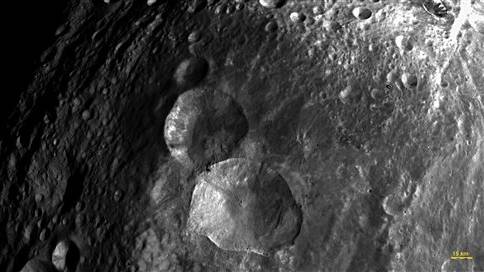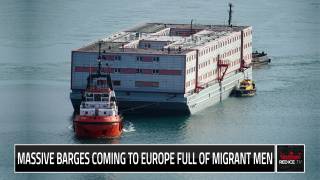Scientists stunned by surface of massive asteroid
Source: mail.com
The first close-up pictures of the massive asteroid Vesta reveal a northern hemisphere littered with craters — including a trio nicknamed "Snowman" — and a smoother southern half, researchers reported Monday.Running along the asteroid’s equator are deep grooves — a surprise to scientists who did not expect to see such features.
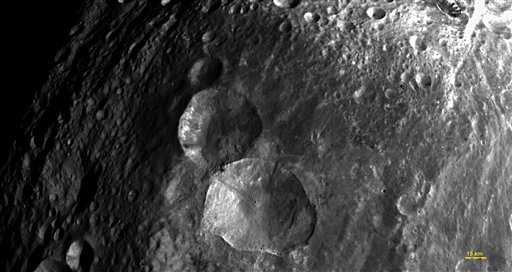
This image of the Asteroid Vesta, released by NASA/Jet Propulsion Laboratory on Monday, August 1, 2011, was captured by the Dawn spacecraft on July 24, 2011 at a distance of 3,200 miles (5,200 kilometers). Dawn entered orbit around Vesta on July 15, and will spend a year orbiting the body. After that, the next stop on its itinerary will be an encounter with the dwarf planet Ceres.
(AP Photo/NASA, Jet Propulsion Laboratory)
"We’re seeing quite a varied surface," said chief scientist Christopher Russell of the University of California, Los Angeles. The images were taken by NASA’s Dawn spacecraft, which began orbiting the 330-mile-wide rocky body last month and beaming back incredible surface details that the team is only beginning to pore over. It’s the first time that Vesta has been viewed up close. Until now, it has only been photographed from afar.
Since entering orbit, Dawn has taken more than 500 pictures, while refining its path and inching ever closer to the surface to get a better view. The probe will officially start collecting science data next week once it is 1,700 miles from the surface. It will get as close as 110 miles while it orbits Vesta for a year.
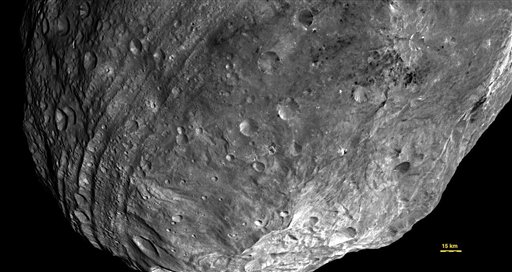
Vesta’s southern section is dominated by a giant crater, the result of a collision eons ago that’s believed to have pelted Earth with numerous meteorites, or broken off pieces of asteroids. The northern side is filled with older craters including three that scientists dubbed "Snowman."
Vesta is "so rich in features" that it will keep scientists busy for years, said Holger Sierks, of the Max Planck Society in Germany, who helps operate the camera.
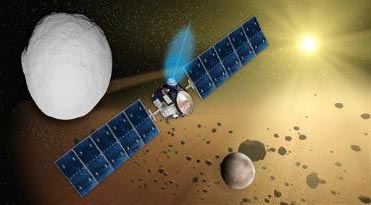
This undated artist rendition released by NASA/JPL shows the Dawn spacecraft orbiting the asteroid Vesta. NASA will host a news conference Monday, Aug. 1, 2011 and unveil the first full-frame images from Dawn’s framing camera. (AP Photo/NASA/JPL)
Currently some 117 million miles from Earth, Vesta is the second-largest resident of the asteroid belt, a zone between Mars and Jupiter filled with hundreds of thousands of space rocks orbiting the sun. The belt formed some 4.5 billion years ago around the same time and under similar conditions as Earth and the inner planets.
Read the full article at: mail.com
All Images: Source, KomoNews.com
Also tune into:
Richard C. Hoagland - Comet Elenin as a Time Capsule, Norway Attack & The Messengers of Horus
Andy Lloyd - Dark Star, Evidence for Planet X
Michael Tsarion - Lucifer & The Dark Side of the Sun
Richard C. Hoagland - The Secret Space Program & The Fukushima Nuclear Reactor Disaster
Richard C. Hoagland - Phobos an Ancient Alien Spaceship, Mars, NASA & Disclosure
Paul A. LaViolette - Electrogravitics, Advanced Space Travel, Pulsars & Breakaway Civilization
